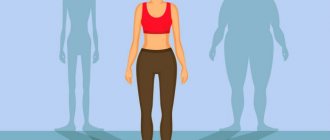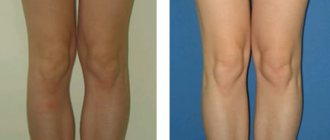By the age of two, most babies have already switched from breastfeeding to regular food. New dishes are constantly being introduced to the menu, it is becoming more and more diverse. During this period of life, the child’s digestive tract can already digest casseroles, solid foods, and various additives.
But still, the diet of a 2-year-old child, his menu is still significantly different from that of an adult. Therefore, parents should be well aware of the rules of baby food for a 2-year-old child and strictly follow them.
Principles of proper nutrition for a 2 year old child
The ratio of proteins, fats and carbohydrates in the diet of a child of the second year of life should be 1:1:4. Proteins are the main building material and are vital for a rapidly growing child's body. The diet of a child aged 2 years must include sources of protein such as dairy and meat products, poultry, fish, and chicken eggs.
Carbohydrates are the main source of energy. They are found in fruits, cereals, bread, sugar, and vegetables. Fats in small quantities are also necessary for a young body to develop and grow.
The average calorie intake for a two-year-old child is 1400-1500 kcal per day. Calorie content is distributed according to meals as follows: breakfast - 25% of calories, lunch - 30%, afternoon snack - 15%, dinner - 30%.
It is important to provide a balanced diet for a 2 year old child. In addition to proteins, carbohydrates and fats, food should contain a sufficient amount of macro and microelements, especially those necessary for normal bone growth.
Salt and spices should be present in the child’s diet in minimal quantities.
Why doesn't my baby gain weight?
How to understand that a child is not gaining weight well, even before weighing in the clinic:
- Sleep time exceeds the age norm, because... the body tries to conserve energy.
- Stool becomes rare or disappears altogether.
- Signs of dehydration appear: the skin loses its elasticity, becomes bluish, the fontanelle sinks, and the mucous membranes dry out.
- Fat folds disappear.
- The baby is constantly looking for the breast or bottle.
- He is lethargic and cries often.
This condition is very dangerous for a baby, and irreversible health consequences can begin as early as the third day.
Reasons for poor weight gain while breastfeeding:
- He is fed by the hour, not on demand.
- He doesn't grab the chest correctly.
- He doesn't have enough strength to suck.
- Little milk is produced.
- The milk is not fat enough.
- Sucking is hampered by the structure of the mother's breast or the baby's mouth, for example, a short frenulum.
Reasons for underweight in infants that are not related to the type of feeding:
- It hurts the child when something gets into the mouth due to stomatitis or thrush.
- Colic, tummy hurts.
- Profuse regurgitation.
- There is no innate sucking reflex.
- Stress, nervous condition in the family or in the mother.
- Diseases of the gastrointestinal tract.
- Excessive activity due to infant swimming, gymnastics.
- The child is sick.
There are diseases that affect weight gain even with a balanced diet and good appetite:
- Diabetes
- Anemia
- Thyroid disorders
- Various neurological disorders
- Cystic fibrosis
- Lactose intolerance
- Parasitic infection
Groups of useful products
When choosing a diet for a two-year-old child, parents can focus on the following food groups: vegetables, fruits, dairy products, cereals, protein foods. This is the basis of any diet. By wisely combining foods from these groups, you can fully meet your child’s nutritional needs and have a balanced diet.
Vegetables and fruits contain a lot of fiber, water, macro and microelements, and vitamins. It is recommended to give them to your baby during each meal, and also use them as a snack. Fruits, berries and vegetables can be eaten fresh, baked, boiled, or steamed.
Many parents remove the skin from cucumbers, apples and other fresh produce before giving them to their child. This should not be done, since the skin also contains many biologically active substances.
If a child does not eat all fruits and vegetables, this does not mean that he will never like them. After a while, try giving them to your baby again and perhaps he will eat with pleasure. This is also true for other food products.
Cereals contain fiber, minerals, and carbohydrates, which fill the baby with energy. This group includes bread, pasta, and cereals. These products, together with fruits and vegetables, form the basis of the daily menu.
It is recommended to choose cereal products with a low glycemic index (whole grain pasta, buckwheat, wholemeal bread).
Dairy products contain a lot of calcium and protein, which are necessary for the normal growth and development of the child's body. That is why milk derivatives should be included in the daily diet. For a two-year-old child, cottage cheese, cheese, kefir, milk, and natural yoghurt are optimal.
Minuses
The main disadvantages if you use dried milk instead of protein:
- Poor digestion.
- Questionable cost savings.
- Lack of amino acids, which will have a negative consequence for the muscles.
- High content of lactose (fast carbohydrates) and other impurities.
- Increased risks of developing diabetes mellitus and insulin resistance.
- Increasing the level of cholesterol in the blood and provoking the development of atherosclerotic damage to blood vessels and the heart.
Prohibited Products
Harmful foods disrupt the functioning of the digestive system, impair metabolism, provoke the development of allergic reactions, and worsen dental health.
The diet menu of a 2-year-old child should not contain the following products:
- fatty fish and meat;
- processed meat products (sausages, sausages, frankfurters, etc.);
- meat broths;
- seafood;
- blue cheeses, sharp cheeses;
- natural coffe;
- products containing dyes, flavors, flavor enhancers;
- instant dry juices;
- sweet soda;
- dry concentrates for preparing side dishes;
- canned food;
- products with fructose;
- pickled, spicy foods;
- sauces (including ketchup, mayonnaise);
- spices;
- barley cereals;
- pastries, cakes;
- mushrooms;
- puff pastry;
- chocolate;
- gum.
History of milk powder production
The first mentions of drying skim milk are found in the manuscripts of Marco Polo, in which he talks about the troops of the Mongol-Tatars. Ivan Erich in his writings described the production of milk powder by freezing. In 1802, the doctor Osip Krichevsky received similar milk, which in its properties is not inferior to modern milk.
In 1832, the Russian chemist M. Dierhoff organized the stable production of this nutritious product. In 1837, the procedure for its manufacture was patented by T.S. Grimwade.
Today, drum and spray drying methods are used to produce dried milk. Advantage is given to the second method, since with it the product does not have an unpleasant caramel taste.
The process looks like this: skim milk is processed in an evaporator until it is possible to isolate up to 50% of the dry matter. The resulting mixture is then sprayed into a heated chamber, where the liquid quickly evaporates, leaving only solid particles.
The most rare method of preparing milk powder is freeze drying. With this method, the nutritional properties of milk are well preserved, but the mixture does not dissolve well in water and changes the taste.
This milk has found its use not only as sports nutrition, but primarily in the culinary industry and for the production of baby food.
Regime and feeding schedule for a 2 year old child
A 2-year-old child's nutritional intake includes four meals a day. Pediatricians recommend feeding the baby at approximately the same time, with equal intervals of 4 hours between meals. If the child has breakfast at 8 o’clock in the morning, then he should have lunch at 12 o’clock, at 16 o’clock, after a nap, a light afternoon snack is necessary and at 19:00 a full dinner.
An example of a child's nutrition at 2 years old:
- Breakfast. This is the basis of a healthy diet. In the morning, it is best to give your child porridge with the addition of a small amount of fruit or butter. For dessert, you can give cookies or a sandwich.
- Dinner. The first course is usually soup, the second is a vegetable side dish, meat or fish dishes, and you can wash it all down with dried fruit compote.
- Afternoon snack. An excellent option would be cottage cheese dishes, cookies, milk, fruit salads, juices, yoghurts.
- Dinner. You can prepare pasta, porridge, boiled or stewed vegetables, and meat casserole for your child.
The above nutritional schedule is designed for healthy children. If a child grows poorly, often gets sick, or his body is weakened, then increased nutrition is necessary. In addition to the main meals, you can add a second breakfast, as well as a healthy snack before bed.
Volume and norms of nutrition
As mentioned above, at this age the baby is fed four meals a day. Breaks between feedings should not exceed 4 hours. Less frequent meals can lead to indigestion, weakness, and apathy, while more frequent meals can lead to overeating and excess weight.
The nutritional chart for a 2-year-old child must include protein foods (milk, low-fat fish and meat, eggs).
In addition, the diet should contain carbohydrates (found in bread, cereals, pasta, sugar), fats, vitamins, macro and microelements. It is extremely important that a growing child's body receives sufficient amounts of calcium. This microelement is necessary for the formation and growth of bone tissue, hair, nails, and skin. Sources of calcium include milk, prunes, cottage cheese, oatmeal, peas, cottage cheese, and cabbage.
How to cope with underweight in infants
First of all, you should make sure that the baby gets enough food. If artificial feeding, you need to double-check the proportions of dilution of the mixture and its quantity per feeding. In the case of breastfeeding, control pumping and weighing are carried out. The first option is not always informative enough. When expressing milk, there is often less milk in the bottle than the baby actually receives.
Control weighing is more indicative. The child is placed on a special baby scale before and after feeding. During the day, different amounts of milk are produced, so control weighing is scheduled for 24 hours, and all data is recorded in a table.
The required daily amount of food is calculated as follows:
- for a newborn up to 10 days of age, multiply 2% of his weight by the number of days of life. Amount of formula per day = 2% * 3200 (child’s weight) * 5 (child 5 days old) = 320 ml per day.
- Divide 320 ml by the number of feedings per day and you get the volume of one feeding.
- at the age of 2-4 weeks - the daily volume is equal to one fifth of the weight;
- from 6 to 12 weeks – one sixth of the weight;
- from 13 to 36 weeks - one seventh of body weight.
If there is reason to believe that sometimes the baby does not eat well due to technical reasons (incorrect attachment, etc.), contact a lactation consultant. Sometimes 1-2 consultations significantly change the situation.
If there is still not enough milk, the pediatrician will recommend feeding the baby with an adapted infant formula.
A competent approach to mixed feeding will help maintain lactation, and the baby will continue to receive mother’s milk, valuable for health and growth.
To do this, feeding begins with the offer of the breast, and only then is a bottle with the mixture given.
When mixed feeding, goat milk formulas are the best option, because they are closest to breast milk in terms of fat profile. They are easier to digest without straining the newborn's delicate ventricle. This is a significant factor for a weakened baby with underweight.
To prevent the baby from giving up breastfeeding completely, the formula should not be too sweet. For example, the goat milk baby food manufacturer Cabrita does not use crystalline sugar. Children like the pleasant creamy taste of natural goat's milk in the mixture, while mother's milk will always seem tastier.
It happens that a child has a good appetite, but milk is simply not digested. This is a reason to conduct an examination to identify or exclude disturbances in the intestines and a possible allergy to milk protein. In case of allergies, the pediatrician will select medicinal mixtures based on amino acids or hydrolysates for artificial feeding or prescribe a dairy-free diet for the nursing mother. If the reason for weight loss is the “lazy sucker” factor, you should put the baby to the breast more often, so that eventually the volume of milk received will increase.
When a child refuses to eat due to colic, the pediatrician prescribes probiotics or infant anticolic medications. To prevent unpleasant sensations in the tummy, give your baby a massage and special gymnastics, place it on the tummy, use dry heat.
Anti-reflux drugs help with excessive regurgitation.
Food recipes for children 2 years old
Potato casserole with meat filling
Take half a kilogram of fresh veal, cut it into small pieces, put it in a pan, add water, lightly salt it and cook. Next, take a kilogram of potatoes, one onion, one carrot, wash them, peel them. Cut the potatoes into pieces, boil, drain the water, make a puree, add butter and milk, and cool.
Chop the onions and carrots, simmer in refined vegetable oil until soft. Grind the boiled meat in a meat grinder and mix with stewed vegetables. Take a glass container, grease its bottom with butter and place half a portion of potatoes. Pour the minced meat mixed with vegetables on top, cover this layer with the remaining puree, and brush the top of the casserole with sour cream. Place the pan in the oven and bake for 20 minutes at 180 degrees Celsius.
Soup with fish balls and potatoes
To prepare this dish, take 300 milliliters of fish broth, put on fire, bring to a boil, add pre-cut potatoes (50 grams), onions (10 grams), carrots (15 grams), parsley root (5 grams). Cook until the vegetables are ready, then add meatballs made from fish fillets to the soup (60 grams of fillet + 1/2 chicken egg + 20 milliliters of milk + 10 grams of white bread crumb). After the meatballs float, season everything with fresh dill. The soup is ready.











